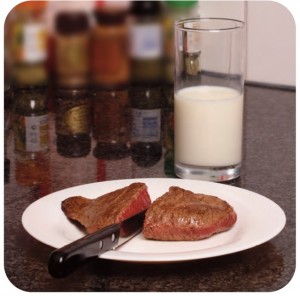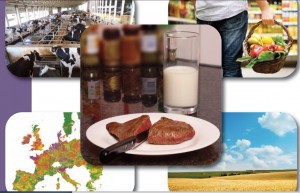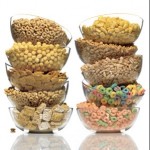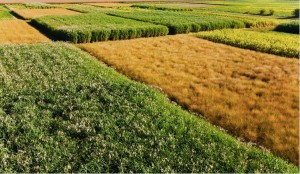Background
It’s not controversial to acknowledge that the European diet relies heavily on meat, dairy products, and eggs, resulting in high intake of saturated fat and red meat, with adverse health impacts. It is also not controversial to acknowledge that livestock production in the European Union (EU) results in high levels of emissions of nitrogen, with significant adverse impacts on the environment.
What is somewhat controversial is linking the two, and going further to conclude that a substantial reduction in consumption of meat and dairy is required in the EU. That link is made in a recent report, Nitrogen on the Table: The influence of food choices on nitrogen emissions and the European environment, a report of the European Nitrogen Assessment prepared by an international group of researchers, led by PBL Netherlands Environmental Assessment Agency.
Eating less meat and dairy of necessity will lead to substantial health benefits, and a reduction in EU livestock production will lead to substantial environmental benefits. At the same time, such behavioral changes will have direct, adverse economic impacts for farmers and suppliers in the agricultural and food processing sectors.
While recognizing that there were sensitivities in making the link, the researchers accepted that dietary choice was an unavoidable component of controlling nitrogen emissions. Technological fixes can lead to improvements but also effect behavioral changes that undercut the improvements. The report notes that we have seen this in efforts to control nitrogen oxides (NOx) in transport through technology, such as engine improvements, with reduced emissions per vehicle, only to see these gains offset by substantial increase in vehicles miles driven.
The Nitrogen on the Table Report
The problem that the report is addressing is the significant increase in consumption in the EU of livestock products over the past 50 years, especially of pig and poultry meat and dairy. For instance, poultry meat increased by 4 times between 1961 and 2007. There has been less growth in consumption of beef and even a slight decline since early 1990s, in part because of the BSE crisis and because beef is generally more expensive. The expansion in consumption is more pronounced in the older Member States of the EU, and pig meat is most common across Europe.
With this expansion, there has been a parallel rise in per capita consumption of protein, which is necessary and healthy, but also a rise in saturated fats, which are currently 42% higher than maximum levels recommended by the world Health Organisation (WHO). In addition, red meat, linked to increased risk of colorectal cancer, is now consumed at twice the level of guidelines from the World Cancer Research Fund.
 Environmentally, the increase in consumption also presents significant risks. Food production is responsible for half of all emissions of reactive nitrogen in European countries. “Reactive nitrogen” (Nr) includes all types of nitrogen (nitrates, ammonia, nitrous oxide) other than unreactive nitrogen (N2). Of all food production, livestocks represent the highest proportion of nitrogen emissions, about 81%, which pollute ground and surface waters, and ammonia and nitrous oxides (a Greenhouse gas), about 87%, which pollute air. The water pollution accounts for increases in biodiversity losses from algae blooms and fish kills. In contrast, cereals account for only about 10% of total food-related emissions of Nr.
Environmentally, the increase in consumption also presents significant risks. Food production is responsible for half of all emissions of reactive nitrogen in European countries. “Reactive nitrogen” (Nr) includes all types of nitrogen (nitrates, ammonia, nitrous oxide) other than unreactive nitrogen (N2). Of all food production, livestocks represent the highest proportion of nitrogen emissions, about 81%, which pollute ground and surface waters, and ammonia and nitrous oxides (a Greenhouse gas), about 87%, which pollute air. The water pollution accounts for increases in biodiversity losses from algae blooms and fish kills. In contrast, cereals account for only about 10% of total food-related emissions of Nr.
Besides the emissions from overall food production, the report also analyses the differences in nitrogen emissions per unit of protein for different commodities. For example, it finds that beef emits 20 times more nitrogen emissions than cereals. While poultry is among the lowest food products in terms of nitrogen emissions, it still emits 2 times as much as fruit and vegetables per unit of protein intake.
After analyzing the data and trends in food consumption and current impacts on health and the environment, the report looks at the implications of varying degrees of reduction in consumption of animal products on health and environment. These are “alternative diet scenarios” reflecting a 25% to 50% reduced consumption of animal products replaced by a higher intake of cereals, a plant-based food product. The analysis did not consider any reduction in calories or increase in fruits and vegetables.
The health benefits of a 50% reduction, for example, in the consumption of meat, dairy and eggs would be considerable. The 50% reduction would bring the levels of saturated fats close to the WHO recommended intake (currently at 42% above the recommendation). Diets rich in saturated fats are linked to an increased risk of cardiovascular diseases (CVD) and strokes. The alternative diet is estimated to reduce CVD and stroke mortality by 4% to 15%. Under the alternative diet, consumption of red meat would fall and would be only slightly higher than recommended by the World Cancer Research Fund. Reducing the intake of red meat may drop colorectal cancer by 7% to 15%.
With a 50% reduction, the protein intake would be about 10% lower than at present but since the protein intake in Europe already exceeds what is recommended, by 70%, protein levels would not drop below current standards.
On the environmental side, the report assumes that reducing consumption of animal products will lead to a comparable drop in animal food production, as opposed to an increase in animal food exports. It also assumes a lower feed use, which opens up options for changes in land use, and the report considers only changes in agricultural use.
A 50% reduction of consuming meat, dairy and eggs would lead to a drop of 40% in nitrogen emissions, with a significant improvement in the air and water quality in the EU. Ammonia emissions would drop by 43%, with better air quality and lower level of particulate matter resulting in reduced human health risks. Greenhouse gas emissions would drop by 19% to 42%, and there would be 23% less cropland needed for food production. Less soybean would be imported, for feed, and more bio-energy and cereal crops would be exported.
There are also scenarios that examine changes in land-use that would result from a drop in consumption of animal products. A “High Prices” scenario assumes that resource allocation is left to the global market, while a “Greening scenario” assumes intervening policy options, including returning agriculture land to natural vegetation cover, such as forest. For the High Prices scenario the analyses assumes Europe becomes a major exporter of crop produce, especially cereal, whereas in the Greening scenario it assumes Europe expands its bioenergy production.
Finally, the report looks at how any alternative diet might realistically be established. A clear path is through changes in consumer preference, likely due to environmental and/or health concerns; public procurement policies; and, other policy interventions, such as taxing the environmental effects of animal production. In addition, generating public awareness of the links between excessive consumption and health could be effective, as it was in linking and publicizing smoking and health effects.
Conclusions
While the report does not engage in an economic analyses of the consequences of adoption of any alternative diet, and the economic impact from reduction of animal production, it acknowledges the obvious: the impact would be substantial. But the land-use scenarios do point to alternative means for the farming community to survive changes in consumer preferences, at least to some extent. In the Irish context, a change in consumer preference for food products grown in environmentally sustainable ways (such as grass-fed beef), which added value to the products, would serve to offset some reductions in volume. Nevertheless, the increase in methane emissions from the growth of agriculture in Ireland would continue to be deeply problematical.
One of the strengths of the report is that it explores how the dietary changes could produce a “cascade of effects,” from reduced production of livestock and manure, lower feed demand, lower nitrogen and GHG emissions, and making agricultural land productive of uses less damaging to health and the environment.
Sources
Westhoek H., Lesschen J.P., Leip A., Rood T., Wagner S., De Marco A., Murphy-Bokern D., Pallière C., Howard C.M., Oenema O. & Sutton M.A. (2015) Nitrogen on the Table: The influence of food choices on nitrogen emissions and the European environment. (European Nitrogen Assessment Special Report on Nitrogen and Food.) Centre for Ecology & Hydrology, Edinburgh, UK.





No comments yet, add your own below